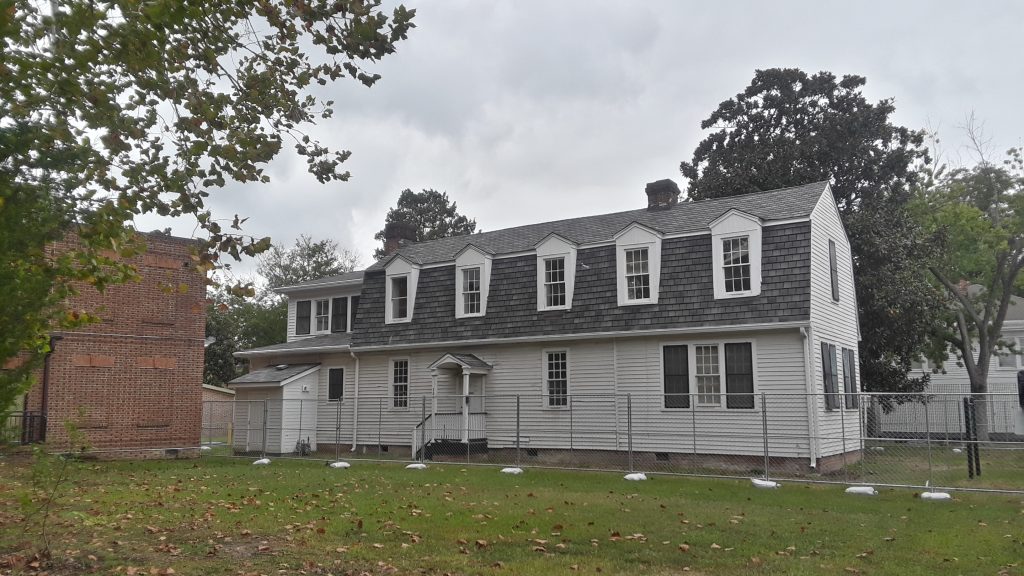By Stacy M. Brown
NNPA Senior National
Correspondent
Colonial Williamsburg is nearing completion on the restoration of the Williamsburg Bray School, the oldest surviving schoolhouse for Black children in America. Founded in 1760 by the Associates of Dr. Bray, a British Anglican charity, the school was established to teach enslaved and free Black children to read, albeit through a curriculum that promoted religious submission to slavery. Yet, for the hundreds of students who passed through its doors, literacy opened possibilities far beyond their assigned roles.
The school’s dedication on November 1 marked a milestone in the project’s meticulous restoration efforts, with public tours set to begin this spring. Located on the grounds of Colonial Williamsburg in partnership with William & Mary’s Bray School Lab, the Williamsburg Bray School stands as a testament to the oppression and resilience woven into early American history. The Smithsonian’s Secretary Lonnie G. Bunch III, who served as the keynote speaker, emphasized the significance of the structure by saying that it has “extraordinary potential” to demonstrate how a small number of people’s dreams helped shape the values of many people.
Dendrochronology—a method of dating wood by its growth rings—helped identify the schoolhouse in 2020, confirming that it was built in the winter of 1759 or spring of 1760. Colonial Williamsburg’s team, under the direction of architectural preservation director Matt Webster, has now identified the 89th original structure in Williamsburg’s Historic Area.

More than 80 former students, now identified through Colonial Williamsburg’s research, attended the Bray School in the 1760s. Among them was Isaac Bee, who later emancipated himself. His enslaver placed ads in the Virginia Gazette warning that Bee “can read.”
Aberdeen, Bristol, and Phoebe—ages 5, 7, and 3—were among other students taught by Ann Wager, the school’s only teacher, who instructed over 300 Black children in reading, Christianity, and obedience. Despite the pro-slavery curriculum, many students quietly resisted by sharing literacy with others in their communities.
“It’s a story of resilience and resistance,” Maureen Elgersman Lee, the Bray School Lab director, told the Associated Press. “The Bray School’s teachings may have been rooted in pro-slavery ideology, but education had a way of empowering these children.” Lee and her team continue researching descendants, with several students tracing their ancestry to Black households such as the Jones and Ashby families. Janice Canaday, a descendant of former students Elisha and Mary Jones, is now Colonial Williamsburg’s African American community engagement manager. Reflecting on her heritage, Canaday shared, “To know what your family has come through—that’s where your power is.”
The Bray School was an exception in a time when most colonies prohibited educating Black people. Though Virginia imposed anti-literacy laws later in the 1800s, Colonial Williamsburg has uncovered evidence suggesting Bray students went on to influence their communities. Jody Allen, director of the Lemon Project, noted that the students likely taught siblings and others what they learned, enabling literacy as an act of defiance.
Since its rediscovery, the Bray School has undergone extensive preservation efforts overseen by Colonial Williamsburg. The team restored historically accurate wooden sills and brickwork, maintaining nearly 75% of the original structure. Officials said the preserved building will anchor research on the intersections of race, religion, and education, shedding light on a part of America’s past often overlooked. “This is an incredibly important opportunity both to understand the Bray School and to understand Williamsburg in the 18th century,” Webster stated.
The school, originally recommended by Benjamin Franklin as a site for Black education, also illuminates the lives of early Black educators in Virginia. William & Mary Professor Emeritus Terry Meyers said the Bray School likely fostered Virginia’s first Black teachers.
Colonial Williamsburg President Cliff Fleet also stressed the educational significance of the school’s story. William & Mary President Katherine Rowe noted that the restored building will serve as a “living testament to the resilience and strength of the Black students who defied their roles by embracing literacy.”
The research will continue as scholars, descendants, and visitors explore the Bray School’s historical role. Researchers hope to relocate the building to Colonial Williamsburg’s Historic Area, preserving the space where generations of Black children gained the knowledge that helped shape their futures. “This project honors not just the children who learned here, but their courage to transcend the limitations set before them,” said Bunch, “a resilience that endures in the story of our nation.”




